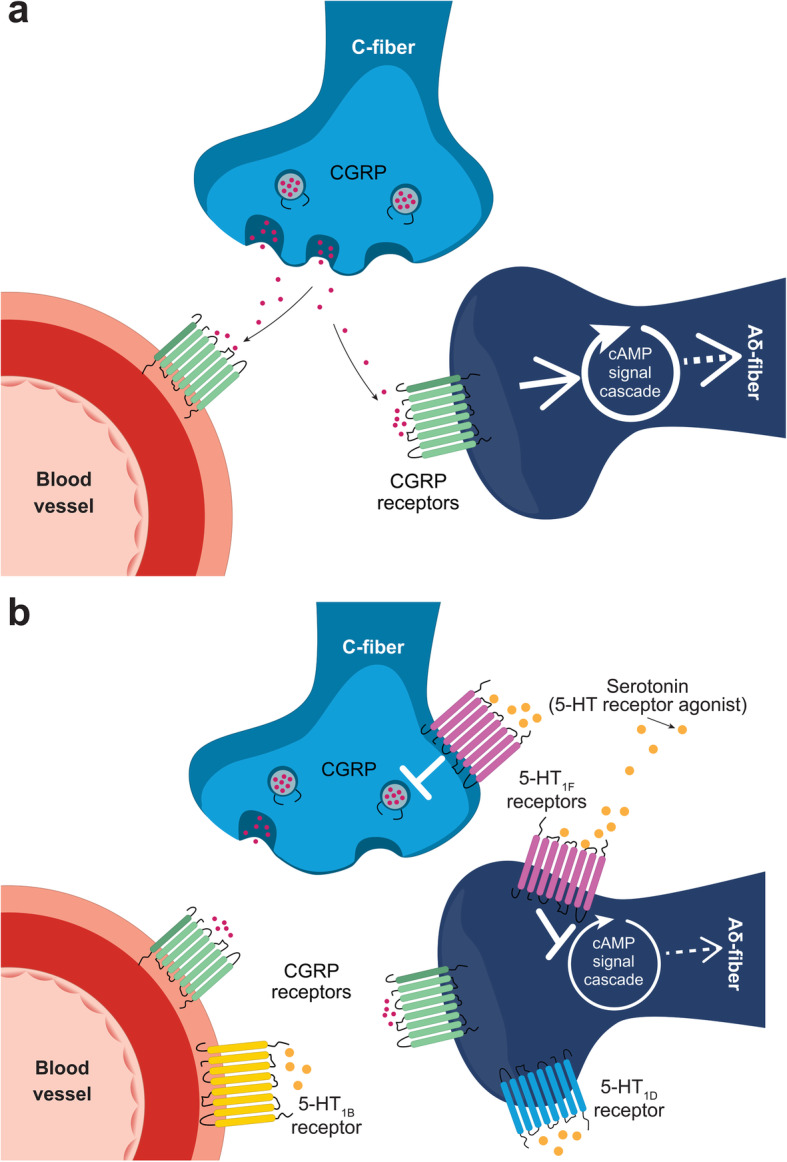Fig. 2.

a Neuropeptides and neurotransmitters regulate pain during a migraine attack. Nerve activity in the trigeminovascular pain pathway leads to the release of neuropeptides and neurotransmitters, such as CGRP and glutamate that can hyperexcite neurons, thereby propagating PNS and CNS pain responses. b The thalamic trigeminovascular neurons, trigeminal ganglion, and the trigeminal nucleus caudalis are densely innervated with serotonergic neurons. Subtypes of serotonin (5-HT) receptors found in these areas, such as 5-HT1F, are believed to be involved in the pathophysiology of migraine. Serotonin receptor agonists are the foundation of many acute treatments for migraine; however, many of these therapeutics are associated with vasoconstriction through activation of 5-HT1B receptors. Serotonin binding to 5-HT1F receptors can inhibit presynaptic vesicular release of CGRP and inhibit postsynaptic cAMP signaling cascades. Abbreviations: 5-HT, 5-hydroxytryptamine (serotonin); 5-HT1, 5-hydroxytryptamine 1 receptor; cAMP, cyclic adenosine monophosphate; CGRP, calcitonin gene-related peptide; CNS, central nervous system; PNS, peripheral nervous system
